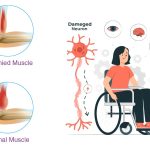Thrombocytopenia simply means you don’t have enough platelets in your blood. Platelets are those tiny cell fragments that help your blood clot. When your count drops too low, your body has a harder time stopping bleeding. It’s not just about bruising easily. In serious cases, you could bleed spontaneously, even inside your body.
There are different causes. Some are immune-related (where your immune system attacks your own platelets), others result from medications, infections, certain cancers, or bone marrow disorders. But no matter the cause, the key concern remains the same: your platelet count is too low, and that puts you at risk.
Common Symptoms to Watch For:
Thrombocytopenia symptoms can be subtle—or severe. People often don’t notice a problem until their platelets are dangerously low. Here’s what typically shows up:
- Unexplained bruising (even in places you don’t remember bumping)
- Petechiae (tiny red or purple dots under your skin)
- Frequent nosebleeds or bleeding gums
- Heavy menstrual flow
- Blood in urine or stool
- Fatigue or feeling weak,
- especially if bleeding is ongoing
If any of this sounds familiar, don’t ignore it. A simple blood test can tell you a lot.
Diagnosis: It Starts With a CBC
A Complete Blood Count (CBC) is usually the first step. This test measures the number of platelets in your blood. Normal is typically 150,000 to 450,000 platelets per microliter. If you’re below 100,000, it’s considered low. Below 50,000? Doctors pay close attention. If you dip under 20,000, that’s when bleeding risks become more serious.
Depending on your situation, your doctor may run additional tests to figure out the underlying cause. This might include a peripheral blood smear, bone marrow biopsy, or antibody tests if an immune issue is suspected.
Treatment: Not Every Case Needs Immediate Action:
Some cases of thrombocytopenia don’t require treatment—just monitoring. For example, if it’s mild and caused by a temporary issue like a viral infection, your platelet count may bounce back on its own.
But if your condition is chronic immune thrombocytopenia (ITP)—an autoimmune form of thrombocytopenia that doesn’t resolve after several months—you might need medication. That’s where drugs like Tavalisse come into play.
Let’s Talk About Tavalisse (fostamatinib):
Tavalisse (fostamatinib disodium hexahydrate) is an oral medication approved by the U.S. FDA for the treatment of adults with chronic ITP who have not responded well to previous treatments like corticosteroids, immunoglobulins, or splenectomy.
Here’s what Tavalisse actually does:
It blocks a specific enzyme (called Syk kinase) that’s involved in your immune system’s attack on your platelets. By interrupting this pathway, Tavalisse can reduce the destruction of platelets, allowing your count to stabilize or even improve.
It’s not a one-size-fits-all solution, but for many patients who’ve been through rounds of steroids or invasive treatments, it offers another path forward.
How Is It Taken?
Tavalisse is taken by mouth, typically twice a day. Your doctor will monitor your platelet levels regularly to adjust the dose if needed. It’s important to stick with your schedule and let your doctor know if you experience side effects.
Common Side Effects:
Like any medication, Tavalisse comes with potential side effects. The most commonly reported ones include:
- Diarrhea
- High blood pressure
- Nausea
- Liver enzyme changes
- Respiratory infections
Your healthcare team will watch for these and make changes if necessary. Communication matters—don’t keep symptoms to yourself.
What to Keep in Mind:
Living with thrombocytopenia can feel unpredictable. One day you’re fine. The next, you’re covered in bruises or feeling faint. That’s why finding the right treatment is so important. If you’ve been diagnosed with chronic ITP and your current medications aren’t doing the job, Tavalisse might be worth asking your hematologist about.
Final Thoughts:
Thrombocytopenia isn’t just about numbers on a chart. It’s about staying safe, staying informed, and getting access to treatments that help you live with confidence. Whether it’s early-stage monitoring or second-line therapies like Tavalisse, there are options on the table.
Talk to your doctor. Ask questions. And if you’re helping someone else through this, encourage them to stay informed, too.
Disclaimer: This content is intended for informational purposes only. It does not replace professional medical advice. Always consult your physician or healthcare provider before starting or stopping any treatment.
Who is the Tavalisse importer in India?
Indian Pharma Network is a leading Tavalisse importer in India. We specialize in compliant access to this approved therapy under the Named Patient Program. IPN manages import permits, documentation, and secure distribution to hospitals and specialists, ensuring uninterrupted supply of Tavalisse for patients across India nationwide.






